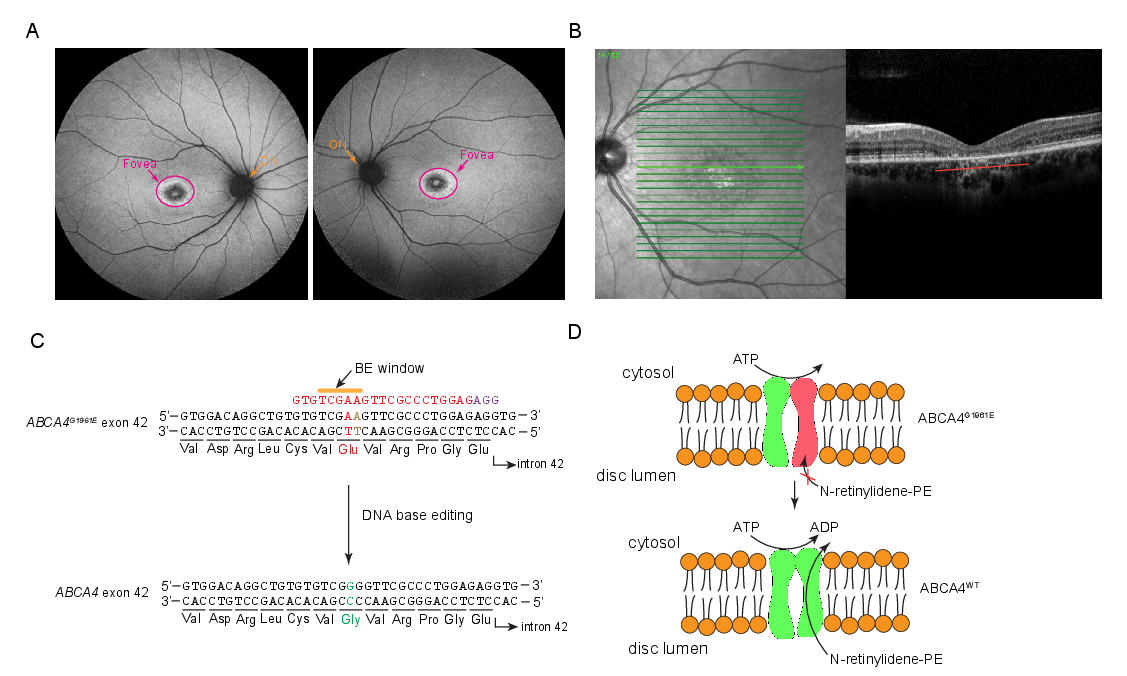Base Editing for Stargardt Disease
IOB translational project
Stargardt disease is one of the most prevalent inherited conditions affecting the eye. Its onset is typically in adolescence and it is among the leading causes of blindness in juveniles. It affects around one in 8,000 people worldwide by severely impairing patients’ ability to focus sharply, i.e. to read and recognize faces, or to see colors. Currently, there is no treatment available.
Researchers and clinicians at IOB are working hand in hand in this translational project to develop a gene therapy. They are preparing for a clinical trial under the guidance of our clinical director Hendrik Scholl, who is a leading expert on Stargardt disease.
The genetic basis of Stargardt disease is well known. While retinal diseases can be caused by mutations in many different genes, and more than 270 of these genes have been identified so far, Stargardt patients carry a mutation in one single gene: ABCA4. Patients will need to inherit one mutated copy of the gene from each of their parents (who typically are unaffected) to become affected.
The protein product of the ABCA4 gene is responsible for removing a toxic degradation product of vitamin A that is produced during the visual cycle in the retina, the light sensitive layer at the back of the eye. Affected patients (in whom the toxic by-product accumulates in the retinal pigment epithelium right underneath the retina) slowly lose their central vision.
With the advent of gene therapy, it is possible to introduce, remove or change the genetic material in cells in order to treat diseases. Base editing, a novel and highly promising approach, can directly change the faulty genetic code by reverting disease-causing mutations back to normal. This process is similar to correcting a single typo in a text. Base editors are complex molecular machines that are guided to the target gene of interest (ABCA4 in our case) via a small nucleic acid molecule.
This translational Base Editing for Stargardt Disease project at IOB aims to transfer the specific base-editor complex to the retina of patients in order to correct the most common genetic mutation (G1961E) that causes Stargardt disease. The base editor is delivered to target cells using adeno-associated vectors (AAVs), which can be compared to miniature “Trojan horses” that bring therapeutic agents to the cells. Their safety and efficacy have already been demonstrated in several clinical trials. However, base editing has not been attempted in humans to date.
IOB is collaborating closely with Beam Therapeutics (https://beamtx.com/) in Boston, Massachusetts, USA, to bring this revolutionary technology to the clinic. Together, researchers will first test base editing on retinal organoids (‘organ-on-a-dish’ system) and in human retinal explants. After carefully selecting the best therapeutic candidate, our group will conduct pharmacology and toxicology tests in accordance with regulatory guidelines to ensure the treatment is safe.
Project Team Members
Project Leader: Bence György, Head of the IOB Clinical Translation Group
Team members
| Beryll Klingler | Research assistant |
| Jane Matsell | Research assistant |
| Alissa Muller | PhD student |
| Wibke Schwarzer | Senior research associate |
| Mantian Wang | Postdoctoral fellow |

